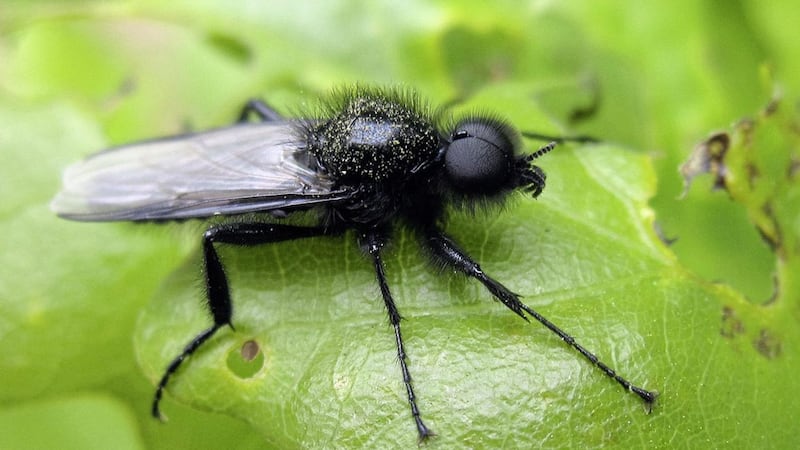AROUND this time every year as spring asserts itself with warming skies, we experience the sudden appearance of long, irksome shiny black flies hanging in the air drifting along with their legs dangling underneath.
St Mark's Fly Bibio marci, is so named because it emerges around the feast day of St Mark which is celebrated on April 25. These flies, common around woodland edges, fields, towns and gardens will often land on and crash into any objects in their way including walls, posts and people.
The St Mark’s Fly has a very short adult life cycle, being in flight for approximately only one week. The majority of their time is spent as larvae in the soil chewing on rotting vegetation with their strong mouthparts, during autumn and winter.
In spring time the males are first to emerge with the females following a few days later. After mating, females lay their eggs in the soil and die soon afterwards.
I am sure St Mark, martyr, author of the Second Gospel and patron saint of Venice never expected his name would be given to a fly though he does have links with the animal world through his symbol of a winged lion.
This symbol for St Mark is believed to be derived from his description of St John the Baptist, as "a voice of one crying out in the desert", with the wings coming from Ezekiel’s vision of four winged creatures as evangelists.
While researching the traditions and stories associated with St Mark, I came across the eerily mysterious tale of ‘porch watching’ which has existed in north Yorkshire and north west England for years on St Mark’s Eve, April 24.
Known as the Vigil of St Mark the Evangelist, it relates to a 17th century Whitby based witch called Maggie who was feared by many but especially by the fishermen and sailors of the town.
Central to Maggie’s story is that she visited the porch of St Mary’s church every year on the night of the April 24, where she would sit through the night to witness the souls of those who were to die in the following year gather outside.
People of the town believed this story and were convinced that Maggie knew who was doomed to die. Consequently, many of the locals would be very kind to her and give her offerings with the hope it wasn’t them to die.
According to Whitby Lore and Legend (Percy Shaw Jeffrey, 1923), "it was customary for Whitby folk to gather in this church porch on the vigil of St Mark, when on the stroke of midnight shadowy forms might be seen to pass through the porch on their way from the Church to the Churchyard.
"These were supposed to be the forms of the parishioners as were fated to die, in the course of the following year."
Such was the notoriety of the church and its grounds that Irish writer Bram Stoker used St Mary’s church graveyard as the setting for a scene in his classic novel Dracula.
Returning to Bibio marci, the males and females look very different with the conspicuous male having very large eyes, long dangling legs and clear wings. The larger female differs with her smaller eyes, shorter legs and smoky brown wings.
Although we find these wayward and unruly flies irritating and annoying in spring, they are totally harmless and as nectarfeeders, they are important pollinators of fruit, trees and crops.
They also have the mark of a Saint!








